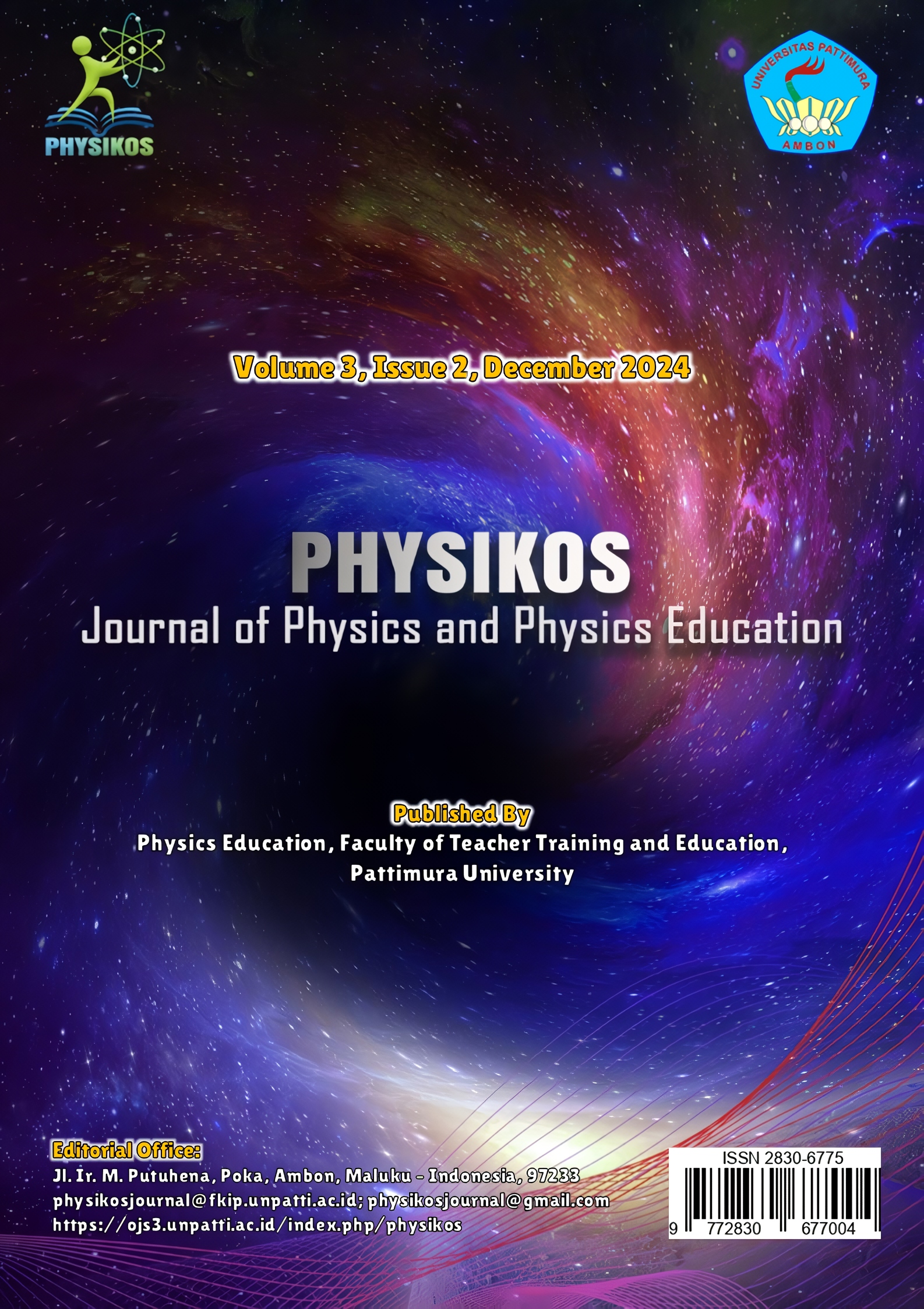Efektivitas Pembelajaran Fisika melalui Metode Eksperimen pada Materi Fluida Statis di Kelas XI SMA Negeri 57 Maluku Tengah
Abstract
The lack of variety in the use of learning methods causes the learning process in the classroom to tend to be monotonous and has an impact on the low active participation of students. This study aims to determine the effectiveness of the application of experimental methods in improving mastery of static fluid material. This study used a quantitative descriptive approach with the subject of students of class XI IPA SMA Negeri 57 Central Maluku, which amounted to 18 people, and was used as a single sample because there was only one class. Data collection instruments were carried out through tests (pretest and posttest), as well as non-test instruments in the form of Learner Worksheets. The results showed that before learning using the experimental method, all students were in the “Fail” category. After the learning process took place for three meetings, there was a significant increase in mastery of the material. The average achievement score of students is in the “Good” category. The N-Gain test results showed an average increase of 0.78 with a “High” qualification. This finding shows that the experimental method can significantly improve concept understanding and mastery of static fluid material. Therefore, the application of the experimental method is feasible to use as an innovative learning strategy in Physics subjects at the high school level.
Downloads
Copyright (c) 2024 Jane Schaduw, David Tuhurima, Seska Malawau

This work is licensed under a Creative Commons Attribution 4.0 International License.





